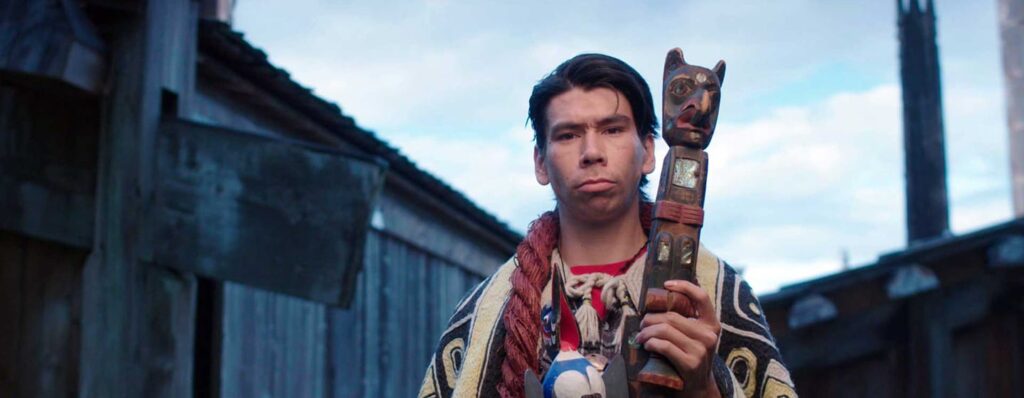by The Cowl Editor on November 1, 2018
A&E - Film & TV
by: Kerry Torpey ’20 A&E Co-Editor
Since 1967, the Public Broadcasting Service (PBS) has produced and created hundreds of hours of educational content for the American public. Most recently, PBS premiered the first two episodes of a four-part series called Native America, which “challenges everything we thought we knew about the Americas before and since contact with Europe.”
The first episode, called “From Cave to Cosmos,” goes back 15,000 years to analyze some of the earliest evidence of Native communities. The episode begins at Chaco Canyon in New Mexico. Leigh Kuwanwisiwma, a Hopi keeper of knowledge, describes going on a pilgrimage through the canyon as “a way of connecting back to our ancestral places.” In the episode, Kuwanwisiwma takes fellow tribe members to a “sacred cave shrine above the ruins of Chaco.” The group allowed for PBS to film the private ceremony for the first time ever.
Ben Sweeney ’00 is a Providence College film professor who played a key role in the production of the series. As a coordinating producer for the local production company Providence Pictures, Sweeney has produced multiple films for The History Channel and NOVA. Native America is the first collaboration between PBS and Providence Pictures.
According to Sweeney, the series “began as an offshoot of a film produced by Providence Pictures for NOVA in 2001 called Lost King of the Maya.” It was not until 2015, however, that Providence Pictures made a successful pitch for the series to PBS.

In terms of how much time the series took to produce, this project took longer than others. Sweeney explains that, alongside routine research, “we also needed to make sure we had the blessing and input of the Native communities that we were working with. These are groups that have long been denied the chance to tell their stories in their own words and it was imperative that we work very closely with them to let them tell their own stories and to make sure we got it right.” Filming, therefore, did not begin until 2016 when a crew was sent to Peru.
As coordinating producer, Sweeney’s role was, “to oversee almost all aspects of production and post-production,” but his main focuses were, “working with the crews, [shooting] logistics and planning, media management, and working closely with the composer and 2D and 3D animators.”
Sweeney says that some of his biggest challenges came from “juggling the logistics of shoots happening simultaneously on two continents, often in remote locations.” The final shoot for the series took place at a remote cave in the Amazon that holds some of the earliest cave paintings in the Americas. “Getting there,” he said, “involved four flights, a ferry and a speedboat ride up the Amazon River, and a several mile trek into the jungle with the crew and all their gear.” The shoot was also delayed when the crew’s gear was sent to the incorrect city in Brazil and their drone flew into a cliff face and broke on the first day.
The real challenge, however, was earning the trust of the Native communities featured in the series. Sweeney says that they were reluctant to trust “outsiders” after hundreds of years of being “silenced and ignored.” It was essential, therefore, to make sure their story was told “in their own words…in order to make sure [the series creators] got it right” and “weren’t sharing anything that they didn’t feel comfortable sharing with the world.”
Sweeney explains that series producer, Julianna Brannum, is a Comanche filmmaker who worked closely with the Native communities at large. The producers also hired Native American musicians to create the soundtrack and storytellers to “narrate the animated sections of the film in the languages of the peoples whose stories were being illustrated.”
In terms of what he wants viewers to take away from the series, Sweeney said, “I hope that people will come away from the series with a new understanding of what the Americas were like before 1492…Before contact, there were over 100 million people living here in massive cities that rivaled those of Europe and were connected by social networks that spanned both continents.” Furthermore, Sweeney hopes that viewers remember that although Native communities are often talked about in the past tense, and despite the fact that “these people and their cultures have survived some of the worst culture devastation and genocide the world has seen,” they are still thriving cultural groups. The series gives a voice to Native communities who have been forced into silence for so long.
Native America airs Tuesdays at 9 p.m. EST on PBS. For those interested, the first two episodes are available for streaming on www.pbs.org/show/native-america/episodes.